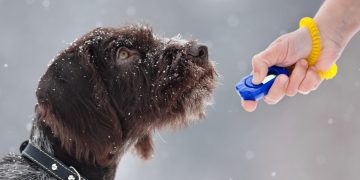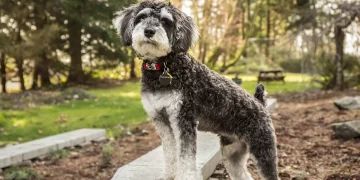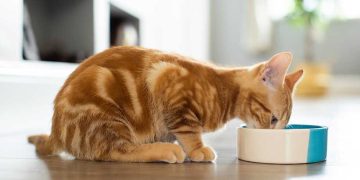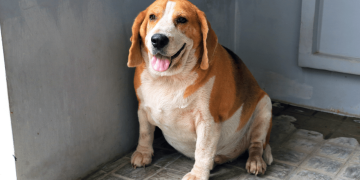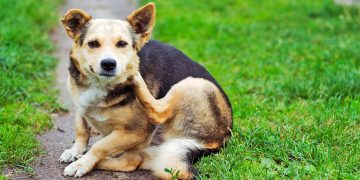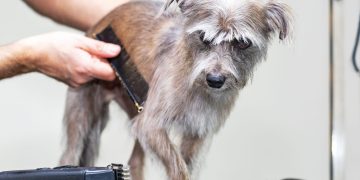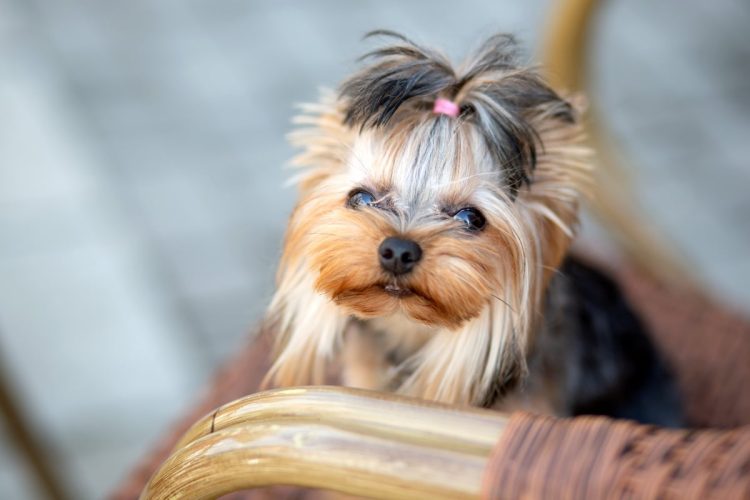A shiny, healthy coat is one of the clearest signs of a well-cared-for pet. Not only does it contribute to their overall appearance, but it also reflects their internal health. A vibrant coat is the product of proper nutrition, regular grooming, and a lifestyle that supports your pet’s overall wellbeing. Whether you’re the proud owner of a dog with a thick double coat or a cat with sleek fur, maintaining a shiny and healthy coat throughout the year requires a combination of the right diet, grooming techniques, and seasonal adjustments.
In this comprehensive guide, we’ll discuss key ingredients and practices for maintaining your pet’s coat, how to adjust grooming routines with the seasons, and common mistakes that pet owners often make during grooming. By following these tips and tricks, you can ensure that your pet’s coat remains as vibrant as ever, regardless of the time of year.
Key Ingredients and Practices for Maintaining a Shiny Coat
Just like human hair, a pet’s coat depends heavily on proper nutrition and care. Let’s dive into the essential ingredients and practices that can help keep your pet’s coat looking glossy and healthy.
1. High-Quality Protein
Protein is the building block of your pet’s skin and coat. It’s essential for healthy hair follicles and the production of keratin, the protein that makes up the hair shaft. Feeding your pet high-quality animal proteins, such as chicken, turkey, lamb, or fish, is crucial for maintaining a healthy coat. Look for pet foods that list high-quality sources of protein as their first ingredients.
Fish is particularly beneficial due to its omega-3 fatty acids, which are known to support healthy skin and shiny fur. Salmon, sardines, and mackerel are all rich in these healthy fats and help to maintain the luster of your pet’s coat.
2. Omega-3 and Omega-6 Fatty Acids
Omega-3 and omega-6 fatty acids are essential for your pet’s skin health and coat condition. These fatty acids help to prevent dry, flaky skin, reduce shedding, and maintain a shiny, smooth coat. They also help to control inflammation in the skin, which can be especially helpful for pets with skin conditions or allergies.
Fish oil is an excellent source of omega-3s, while omega-6s are found in vegetable oils like sunflower and flaxseed oils. If your pet’s diet doesn’t contain enough of these fatty acids, consider supplementing their food with fish oil or flaxseed oil. These supplements can help improve your pet’s coat, making it soft, shiny, and less prone to shedding.
3. Biotin and Vitamin E
Biotin, a B vitamin, is known to help strengthen the hair and improve its texture. It promotes hair growth and reduces shedding, making it a key nutrient for a shiny coat. Biotin can be found in foods like eggs, liver, and fish, but it’s often included in high-quality pet supplements and foods.
Vitamin E plays an important role in maintaining healthy skin and hair by providing antioxidant protection. It helps to protect the skin from oxidative stress, which can cause hair follicles to weaken. You can add a vitamin E supplement to your pet’s diet or ensure their food contains this crucial vitamin.
4. Zinc and Copper
Zinc is essential for maintaining healthy skin and fur. It plays a vital role in cell reproduction, tissue growth, and the metabolism of fatty acids, all of which contribute to a glossy coat. Zinc deficiencies in pets can lead to dry, flaky skin and poor coat health.
Copper is also important for maintaining pigmentation and the overall health of the fur. It supports collagen formation, which contributes to skin elasticity and strength. Both zinc and copper are often found in high-quality pet foods, especially those that are designed to promote healthy coats and skin.
5. Hydration
Proper hydration is often overlooked when it comes to maintaining a healthy coat, but it’s just as crucial as a balanced diet. Dehydration can lead to dry skin, which in turn leads to a dull, flaky coat. Make sure your pet always has access to fresh water, especially if they eat dry food, as it can contribute to dehydration.
If your pet has trouble drinking enough water, try adding a bit of low-sodium broth to their water bowl or mix water into their food. You can also offer them wet food, which naturally contains more moisture and helps keep them hydrated.
6. Regular Grooming
Regular grooming is essential for maintaining a healthy coat. Brushing your pet’s fur removes dead hair and debris, helps distribute natural oils, and prevents mats and tangles. Depending on the breed, your pet may need more frequent grooming. For instance, long-haired breeds like Shih Tzus or Maine Coons may require daily brushing, while short-haired dogs or cats only need weekly grooming.
Brushing also stimulates blood flow to the skin, which helps to nourish hair follicles and supports overall coat health. Use grooming tools that are appropriate for your pet’s coat type, such as slicker brushes for long-haired pets or bristle brushes for short-haired breeds.
7. Bathing (but Not Too Often)
Bathing your pet is another important aspect of coat maintenance. However, over-bathing can strip natural oils from their coat, leading to dryness and irritation. Most pets only need a bath every 4-6 weeks, although pets with certain skin conditions may require more frequent bathing. Always use a pet-friendly shampoo that’s gentle on their skin and coat.
Consider using an oatmeal-based or hypoallergenic shampoo if your pet has sensitive skin or allergies. Additionally, always ensure that you rinse your pet thoroughly to avoid any shampoo residue that can cause itching or irritation.
Seasonal Grooming Adjustments
As the seasons change, so do your pet’s grooming needs. Seasonal shifts bring different challenges for coat health, and adjusting your grooming routine to match these changes can help your pet’s coat stay shiny and healthy year-round.
1. Spring and Summer Grooming
In the warmer months, pets may shed more frequently due to the increase in temperature and daylight. This is especially true for double-coated breeds, which shed their undercoat to stay cool. During this time, regular brushing is important to remove loose fur and prevent matting.
Consider getting your pet professionally groomed, especially if they have long or thick fur that tends to mat. Regular brushing and trimming can help prevent hairballs and keep their coat in top condition. Make sure to keep your pet hydrated, as increased heat can lead to dehydration, which can affect their coat and skin.
In the summer months, pets may also be more prone to skin irritation and sunburn, particularly lighter-colored animals with thin coats. If your pet enjoys spending time outdoors, consider using pet-safe sunscreen on their exposed skin, or keep them shaded and indoors during the hottest parts of the day.
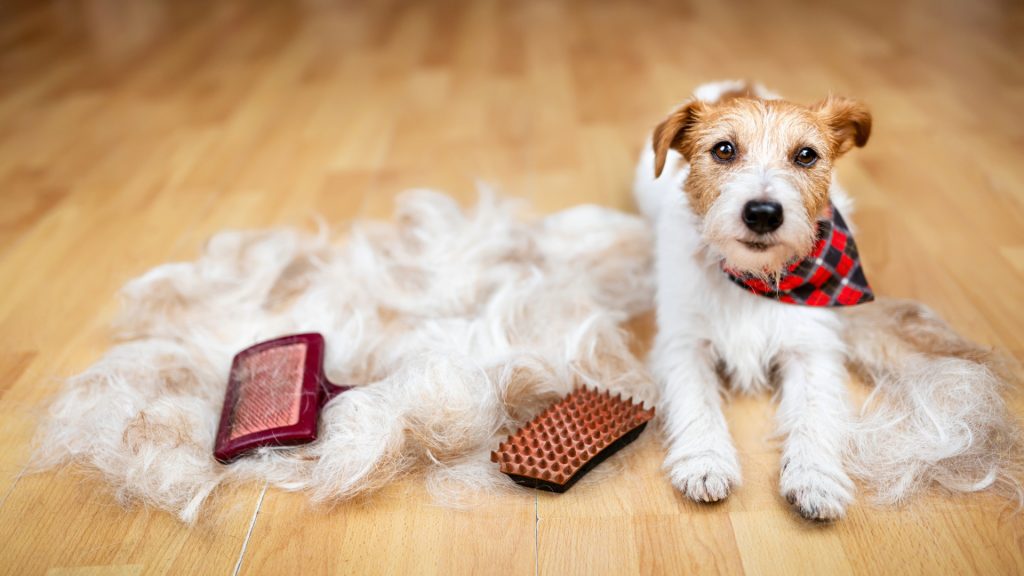
2. Fall and Winter Grooming
In cooler months, your pet may start to grow a thicker coat in preparation for colder weather. This is especially true for breeds that have a double coat. Although your pet’s coat may become thicker, it’s still important to continue grooming regularly to prevent mats and tangles, especially in long-haired pets.
Winter can also bring dry indoor air, which can lead to dry, flaky skin. Ensure that your pet stays hydrated and consider using a humidifier in the home to help combat the dry air. Avoid over-bathing your pet during winter, as this can further dry out their skin.
Additionally, be mindful of your pet’s paws during the winter months. Snow, ice, and salt can irritate their pads and affect their overall skin health. After outdoor walks, wipe your pet’s paws clean and apply a paw balm if necessary to keep their paws soft and healthy.
Common Mistakes Pet Owners Make While Grooming
Even the most dedicated pet owners can make mistakes when it comes to grooming. Here are some common mistakes that can negatively affect your pet’s coat:
1. Over-bathing
Bathing your pet too frequently can strip away natural oils that keep their coat healthy. Only bathe your pet when necessary, and make sure to use a gentle, moisturizing shampoo.
2. Not Brushing Regularly
Brushing your pet’s coat regularly helps remove dead fur, prevents matting, and distributes natural oils. Neglecting to brush your pet’s coat can lead to tangles, mats, and skin irritation.
3. Using Human Hair Products
Never use human hair products on your pet. Human shampoos, conditioners, and oils are formulated for different pH levels and can irritate your pet’s skin. Always use products that are specifically designed for pets.
4. Ignoring Skin Issues
Dry, flaky, or irritated skin can lead to a dull coat. If you notice any signs of skin irritation or abnormal shedding, consult with your veterinarian. This could be a sign of an underlying issue, such as allergies, parasites, or a nutritional deficiency.
5. Forgetting to Check for Parasites
Fleas, ticks, and other parasites can damage your pet’s skin and coat. Regularly check your pet for signs of parasites, especially if they spend a lot of time outdoors. Treating parasites promptly can prevent skin problems and ensure your pet’s coat remains healthy.
Conclusion
Maintaining a shiny and healthy coat for your pet requires a combination of proper nutrition, grooming, and seasonal care. By providing your pet with a diet rich in high-quality proteins, omega fatty acids, and essential vitamins, you can ensure their coat stays vibrant and soft. Regular grooming, hydration, and the right grooming tools are also essential for promoting a healthy coat year-round.
Be mindful of seasonal changes and adjust your grooming routine accordingly, ensuring that your pet’s coat remains in peak condition no matter the weather. Finally, avoid common grooming mistakes like over-bathing or using the wrong products to keep your pet’s coat glossy and healthy for years to come.





